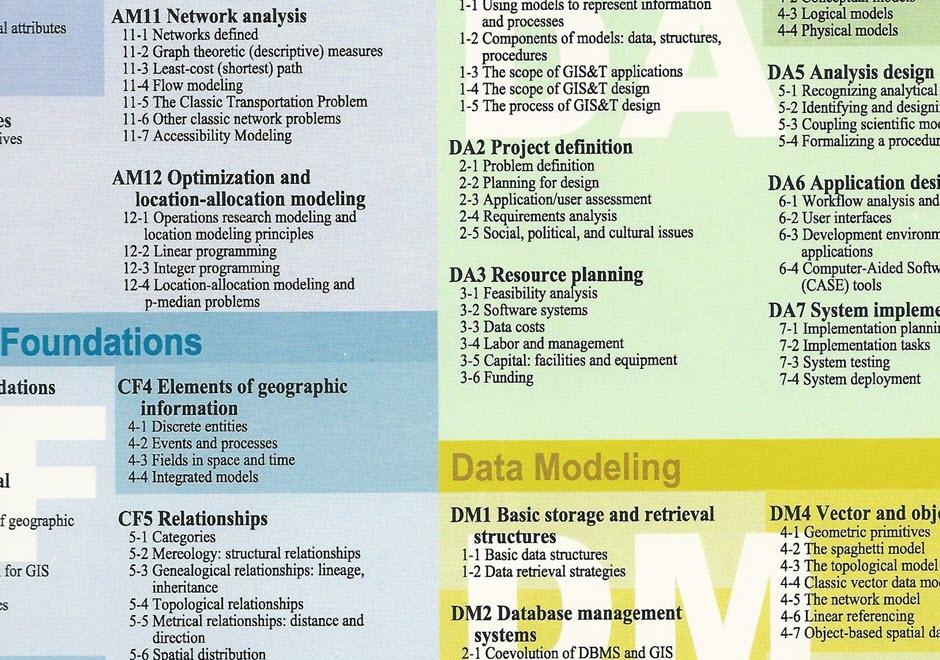AM-04 - Overlay

- Explain why the process “dissolve and merge” often follows vector overlay operations
- Outline the possible sources of error in overlay operations
- Compare and contrast the concept of overlay as it is implemented in raster and vector domains
- Demonstrate how the geometric operations of intersection and overlay can be implemented in GIS
- Demonstrate why the georegistration of datasets is critical to the success of any map overlay operation
- Formalize the operation called map overlay using Boolean logic
- Explain what is meant by the term “planar enforcement”
- Exemplify applications in which overlay is useful, such as site suitability analysis


AM-24 - Outliers